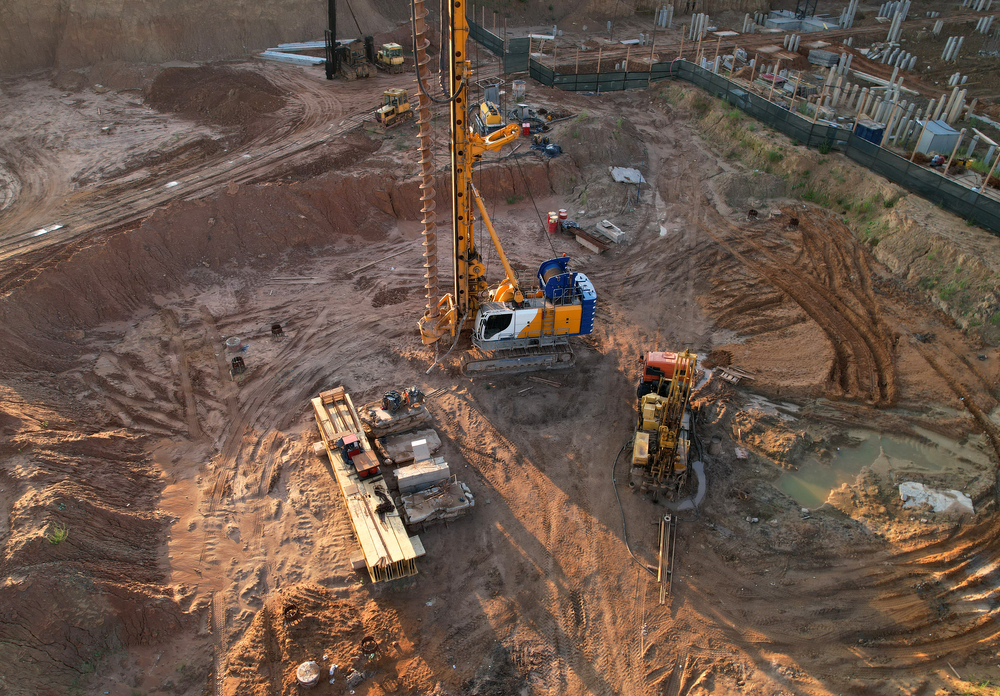The Basic Principles Of Geotheta
The Basic Principles Of Geotheta
Blog Article
3 Simple Techniques For Geotheta
Table of ContentsGeotheta Things To Know Before You BuyHow Geotheta can Save You Time, Stress, and Money.About GeothetaThe Best Guide To Geotheta
They collaborate with civil engineers, architectural designers, engineers, and other experts to integrate geotechnical considerations right into the general job style and building and construction procedure. This needs effective teamwork, control, and interaction to make sure that the geotechnical elements align with the task purposes and satisfy regulatory needs.Mining & Products Engineering: Principles of exploration, infiltration rates, and elements affecting the choice of drilling approach. Characteristics of nitroglycerins, shooting systems and blast patterns. Blasting strategies in surface and below ground functions. Special blasting techniques at excavation borders. Vibration and sound control. Mechanical and constant methods to fragmentation, consisting of longwall shearing and fullface boring.
Modelling of piece and bit dimension distributions; comminution as a transfer function. Comminution technology: squashing, grinding, dimension classification. Integrated evaluation of fragmentation and comminution operations. Provided by: Mining & Products Engineering.
The Definitive Guide for Geotheta
Bachelor's level programs in civil, geotechnical, geological, and ecological design usually last 4 years and consist of basic education and learning courses in English, social science, and the humanities, as well as training courses in innovative maths, architectural geology, and liquid mineralogy. (https://geotheta-46958753.hubspotpagebuilder.com/blog/unlocking-the-future-with-top-notch-geotechnical-engineers-at-geotheta)
Geotechnical design includes the evaluation of the dirt and rock conditions at a particular website, and their effects for the development of that website. As the majority of frameworks depend on the ground for assistance, it lacks surprise that a comprehensive understanding of the ground problems, and the viability of foundation systems, are important to the lasting security and efficiency of the building or structure.
Specialising in the examination of geological developments and ground behaviour, geotechnical engineers do clinical examinations and screening to understand the impact these geological developments might have on the style and construction of building, civil and facilities jobs. This know-how is critical for the design and construction of buildings, roads, tunnels, dams, bridges, and water system and sewer systems.
The geotechnical group at Douglas Allies consistently speak with architects, layout engineers, designers, and builders to make recommendations on design and advancement proposals to guarantee that the built structures are suitably designed for the ground conditions. For instance, the layout of footing systems requires to think about the weight of the structure, the capability of the ground to support that weight together with activity resistances and effective building.
Top Guidelines Of Geotheta
This task is significantly simplified by the use our Douglas Map geospatial platform that makes this information easily available in a very easy to utilize internet browser user interface. A geotechnical engineer will certainly direct the boring of boreholes and examination pits to gather dirt and other examples, and additionally examine surface attributes and ground exposures to develop a geotechnical model of the subsurface conditions.
Relying on the project type and ground problems experienced, research laboratory testing might amongst other points analyze strength, compressibility, sensitivity and/or leaks in the structure of dirt and rock samples. After this information is accumulated and collated, the results are utilized for a geotechnical version of the site, which is usually presented as areas throughout the website.

A geotechnical examination naturally can only analyze the ground problems at the locations pierced or excavated. All-natural variants in dirt and rock conditions can happen across a site and in between test locations. It is for that reason good method that the geotechnical engineer be preserved throughout building of the task to give on-site confirmation that the ground conditions come across are constant with the assumptions and suggestions supplied in the geotechnical examination report.
The 5-Minute Rule for Geotheta
Geotechnical engineers utilize their extensive understanding of dirt and rock to assess threat and resolve issues on diverse facilities projectsGeotechnical design is a specialist branch of civil engineering which looks at the behaviour of planet products and the application of soil and rock mechanics. Geo Tech Engineering. As a geotechnical designer, you will examine the physical, mechanical and chemical homes of dirt and rock in order to create structures, maintaining structures and earthworks
Geotechnical design is very closely linked to and overlaps with, both engineering geology and ground engineering - http://prsync.com/geotheta/. It's possible to be experts in geotechnics or help a geotechnical business however be called a design rock hound or a ground engineer. As a geotechnical engineer, you'll require to: build and maintain relationships with customers and other experts associated with the site, throughout each projectmaintain security standards on site bear in mind price effects when you make recommendationsstudy geological maps and aerial photographs from a series of resources and from different time periodsexamine building and construction plans to see how practical they are based on your understanding of the siteinvestigate risks or geological hazards for the sitesearch for environmentally sensitive attributes, such as land fill beginning to establish valid and expository ground modelsplan area investigationsdrill and evaluate samples of bedrock, soil, groundwater and extra products oversee various other experts on sitesolve technological problems as they emerge, such as unforeseen frameworks at drill sitesmonitor conditions throughout and after construction to make certain structures are steady in the brief and long termadding data accumulated on site to your preliminary researchcreating geotechnical estimations, drawings, and 2 or three-dimensional computer system designs translating the datamaking referrals about the suggested usage of the site

Report this page